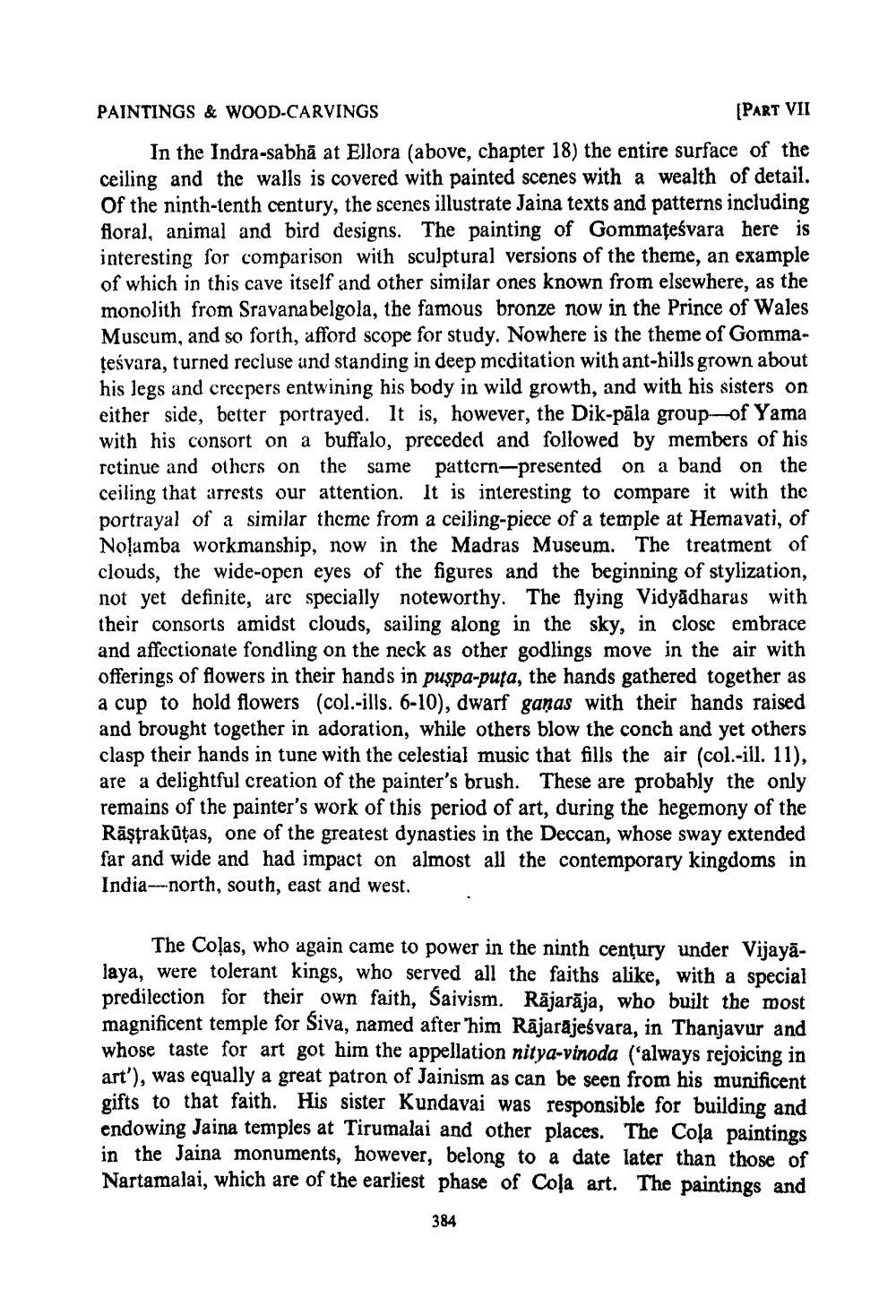________________
PAINTINGS & WOOD-CARVINGS
[PART VII
In the Indra-sabha at Ellora (above, chapter 18) the entire surface of the ceiling and the walls is covered with painted scenes with a wealth of detail. Of the ninth-tenth century, the scenes illustrate Jaina texts and patterns including floral, animal and bird designs. The painting of Gommatesvara here is interesting for comparison with sculptural versions of the theme, an example of which in this cave itself and other similar ones known from elsewhere, as the monolith from Sravanabelgola, the famous bronze now in the Prince of Wales Muscum, and so forth, afford scope for study. Nowhere is the theme of Gommatesvara, turned recluse and standing in deep meditation with ant-hills grown about his legs and creepers entwining his body in wild growth, and with his sisters on either side, better portrayed. It is, however, the Dik-pāla group-of Yama with his consort on a buffalo, preceded and followed by members of his retinue and others on the same pattern-presented on a band on the ceiling that arrests our attention. It is interesting to compare it with the portrayal of a similar theme from a ceiling-piece of a temple at Hemavati, of Nolamba workmanship, now in the Madras Museum. The treatment of clouds, the wide-open eyes of the figures and the beginning of stylization, not yet definite, arc specially noteworthy. The flying Vidyadharas with their consorts amidst clouds, sailing along in the sky, in close embrace and affectionate fondling on the neck as other godlings move in the air with offerings of flowers in their hands in puspa-puta, the hands gathered together as a cup to hold flowers (col.-ills. 6-10), dwarf ganas with their hands raised and brought together in adoration, while others blow the conch and yet others clasp their hands in tune with the celestial music that fills the air (col.-ill. 11), are a delightful creation of the painter's brush. These are probably the only remains of the painter's work of this period of art, during the hegemony of the Rāṣṭrakūtas, one of the greatest dynasties in the Deccan, whose sway extended far and wide and had impact on almost all the contemporary kingdoms in India-north, south, east and west.
The Colas, who again came to power in the ninth century under Vijayalaya, were tolerant kings, who served all the faiths alike, with a special predilection for their own faith, Śaivism. Rājarāja, who built the most magnificent temple for Śiva, named after 'him Rajarajesvara, in Thanjavur and whose taste for art got him the appellation nitya-vinoda ('always rejoicing in art'), was equally a great patron of Jainism as can be seen from his munificent gifts to that faith. His sister Kundavai was responsible for building and endowing Jaina temples at Tirumalai and other places. The Cola paintings in the Jaina monuments, however, belong to a date later than those of Nartamalai, which are of the earliest phase of Cola art. The paintings and
384




